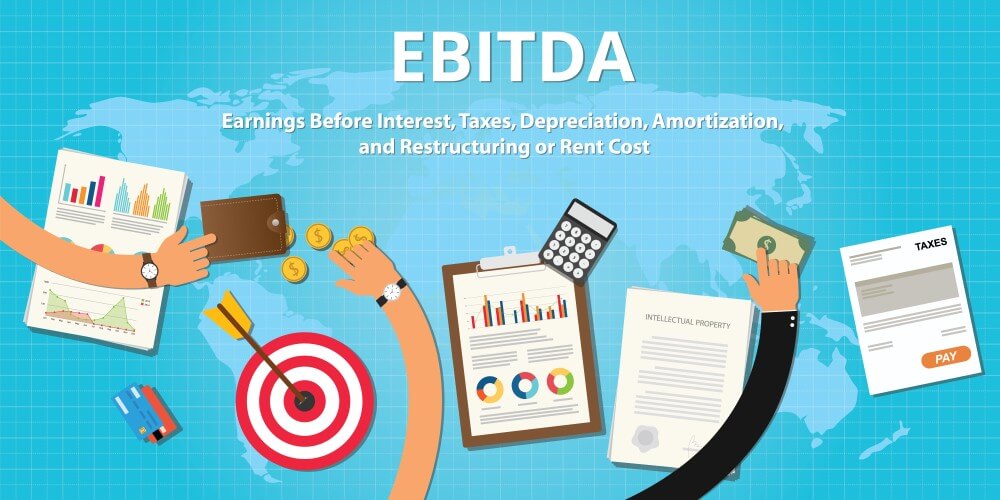How healthy is your business? What does a healthy business even look like? These are questions which all small business owners need to ask themselves in order to remain competitive.
Profitability ratios are some of the most important metrics you can use to assess the health of your business in comparison to your competitors. Here we take an in-depth look at the various different types of profit ratio, what they mean, and how to calculate ratios in order to determine how profitable your business really is.
What are ratios of profitability?
A profitability ratio is a way of measuring how able your business is to generate earnings in relation to your expenses, assets and shareholder equity. If your profitability ratios are better than those of your competitors, or higher than they have been in previous comparable financial periods, this means that your business is healthy and likely to continue doing well.
There are various different types of profit ratio, and these metrics are used to determine how well a business is executing its operations and utilizing its assets in order to generate profits. Profitability ratios fall into two main categories:
- Margin ratios – these show the ability of your business to translate the money you make from sales into profits.
- Returns ratios – these demonstrate the efficiency of your business at generating returns for your stakeholders.
Both of these types of profit ratios are used to give insights into the overall financial health of your business.
Examples of margin ratios
1. Gross profit ratio
This compares your sales revenue to your overall gross profit. It demonstrates how much money your business is making once its operating costs have been taken into account.
If your gross profit ratio is high, this is a sign of a healthy business, as it shows that you can easily cover the costs of your operations while still generating a profit for the business. If your gross profit margin is low, this shows that there are areas where your business could be more efficient – perhaps your suppliers are charging you too much, or your marketing is not effective enough.
You can calculate this ratio by using the formula:
Gross profit ratio = gross profit / sales x 100
2. EBITDA margin ratio
This is the analysis of your business earnings before interest, tax, depreciation, and amortization are taken into account. It is often used to compare the profitability of your business to those of your competitors, as it excludes discretionary expenses.
While this profitability ratio does not give the most accurate picture of the performance of your business, it is a metric which is widely used in company valuations, so it is still an important figure to work out.
There are two ways of calculating your EBITDA margin ratio:
EBIDTA margin ratio = revenue – operating expenses
Or
EBIDTA margin ratio = net income + interest + taxes + depreciation + amortization
3. Operating profit margin ratio
This metric shows the earnings of your business as a percentage of your sales, before income tax and interest expenses have been deducted. A high operating profit margin shows that your business is being managed effectively, as the variable costs are being kept low. This enables you to offer lower prices than your competitors, increasing your market share.
The profitability ratio formula for working out your operating profit margin ratio is:
Operating profit margin = operating profit / total revenue
4. Cash flow margin ratio
This shows how efficient your business is at converting sales into cash. This is extremely important, because the more cash flow you have, the better equipped your business is to avoid unnecessary expenses such as late payment fees, as you will always have enough money available to pay your bills on time.
A high cash flow margin ratio also means you have more money at your disposal to purchase assets and facilitate the growth of your business. You can calculate your cash flow ratio using the formula:
Cash flow margin = cash flows from operating activities / net sales
5. Net profit ratio
In many ways, your net profit ratio is the most important profitability ratio of them all. Your net profitability ratio takes everything into account. All expenses, including taxes and interest payments, are included.
This means that the metric gives a clear picture of how profitable your business is in comparison to everything you have to spend out as part of your operations. You can work out your net profit ratio by using this formula:
Net profit ratio = net profit (after tax) / revenue
Examples of returns ratios
1. Return on assets
This shows your net earnings as a percentage in relation to the total assets of your business. It demonstrates how much profit your business generates, after tax, for every dollar’s worth of assets belonging to the business.
This has an impact on your operating costs, because if your profits are low in comparison to your assets, it shows that the cost of your assets is high. This means that it will cost you more money to create the infrastructure you need to become more profitable.
The formula for working out your return on assets is:
Return on assets = net profit / total assets
2. Return on equity

This shows how much net income is being generated in relation to the equity that investors have put into your business. If your return on equity ratio is high, this means your business is less likely to be reliant on debt financing, so investors are more likely to want to buy into your business. This has a direct impact on the price of shares in your business, as a high return on equity ratio correlates with a higher share price.
You can calculate this ratio by using the formula:
Return on equity = profit after tax / net worth
If you need to know how to work out the net worth of your business, the formula to use is:
Net worth = equity share capital + reserve + surplus
How you can use profit ratios to assess your business health
Individually, profitability ratios measure different aspects of the financial health of your business. Put together, they give you a clear picture of areas where your business is doing well financially and generating healthy profits, and areas where there might be room for improvement. This enables you as a business owner to take better decisions about the management of your business, and use the assets you have to maximize profits.
Many businesses consolidate all the results of their various profitability ratios into a Discounted Cash Flow model. This is a broader financial statement that looks at historical and current results in order to make predictions for the financial future of the business, and also includes a Net Present Value which shows you how much your business is worth at the current reporting time.
In addition, there are a number of other ratios you can use to inform the overall picture of the financial health of your business. These include:
1. Debt-equity ratio
This shows you the amounts of debt and equity your business relies on to finance its assets. If this ratio is too low, it illustrates that you are risking too much of your own business capital instead of taking advantage of opportunities to borrow. If it is too high, it demonstrates that your business relies too much on loans. Ideally, your debt-equity ratio should be around 2:1.
You can calculate this ratio using the formula:
Debt-equity ratio = total liabilities / shareholders’ equity

2. Current ratio
This is a useful metric, as it shows you how capable your business is of paying back its immediate liabilities. Again, you should aim for a ratio of around 2:1, as this shows that you are in a good short-term position while still making the best use of your working capital.
The formula for calculating your current ratio is:
Current ratio = current assets / current liabilities
3. Stock turnover ratio
This metric only applies to companies which deal in goods rather than services. It demonstrates how effective your business is at turning your stock into profits. If the ratio is too high, it shows that your stock is not being sold quickly enough. If it is too low, this means you are probably struggling to meet customer demands.
You can calculate your stock turnover ratio using the formula:
Stock turnover ratio = cost per unit sold / average stock level
Assessed together, all of the profitability ratios we have discussed here give you an extremely accurate picture of the health of your business’ finances.
